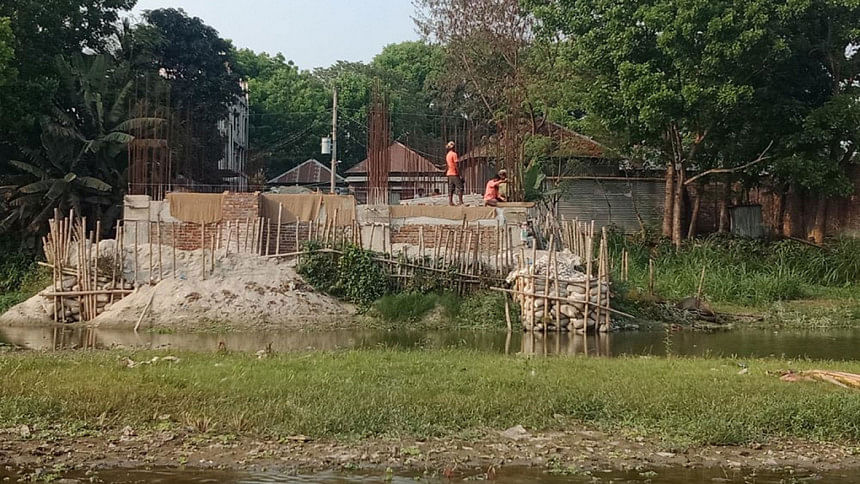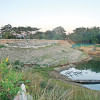Atrai held hostage to greed

The Atrai river, which once flowed wide and strong through Santhia upazila in Pabna, is now barely recognisable.
Residents who used to swim and fish in the river during their childhood now find no sign of it near the Kashinathpur haat area, said Abul Hossain, an elderly local.
The river, which is 47 kilometres long and flows through three upazilas, has played a vital role in bringing a flow of water to Gaznar beel of Pabna's Sujanagar upazila and setting a link with Jamuna river. However, it has lost its natural flow of water in the last four decades due to rampant encroachment.
According to Water Development Board (WDB), the minimum width of the river was 80 to 90 feet, and the maximum width was about 190 to 200 feet. However, the river has turned into a 30-foot canal now, as encroachers have occupied the rest.
Residents of the area blame a small culvert that was established near the Kashinathpur haat three to four decades ago for halting the flow of water. Since then, encroachers have started establishing a series of structures around the river.

The Kashinathpur point of the river is the connecting point of Santhia and Sujanagar upazila. Different authorities have taken different initiatives but the river's situation remains unchanged.
During a recent visit to Kashinathpur haat, this correspondent found that people dump garbage from Kashinathpur haat on both sides of the culvert, while encroachment continues unabated by the pile of garbage.
Meer Monjur Elahi, chairman of Kashinathpur union parishad, said the killing of the river began in the 80s after the launch of an irrigation project.
"Since introducing the irrigation project, the river turned into a narrow canal, as people started cultivating paddy by encroaching river banks," he added.
Md Mosharaf Hossain, assistant director of Pabna Water Development Board, said WDB launched the irrigation project in the Atrai river for the sake of increasing crop cultivation in this region.
"We have several sluice gates for controlling the flow of water. We are preserving water and supplying it according to our needs," he said.
However, during the visit to the sluice gate beside the Kashinathpur haat, this correspondent found only a few feet of the canal exists, with no flow of water.
People are cultivating paddy while many establishments exist around the river, encroaching on river banks.

However, owners of these structures have claimed that they all have legal land documents, signed by the relevant government authorities.
Sultan Hoossain, a shopkeeper running his business on the river bank, claimed, "This is not a river land. I bought the land earlier, abiding by all legal procedures."
Locals and environmentalists have claimed that the destruction of the Atrai river has not only affected the environment but also the lives of the people who depended on the river for their livelihoods.
The situation calls for immediate action to restore the river's natural flow of water and prevent further encroachment, they added.

 For all latest news, follow The Daily Star's Google News channel.
For all latest news, follow The Daily Star's Google News channel. 





Comments